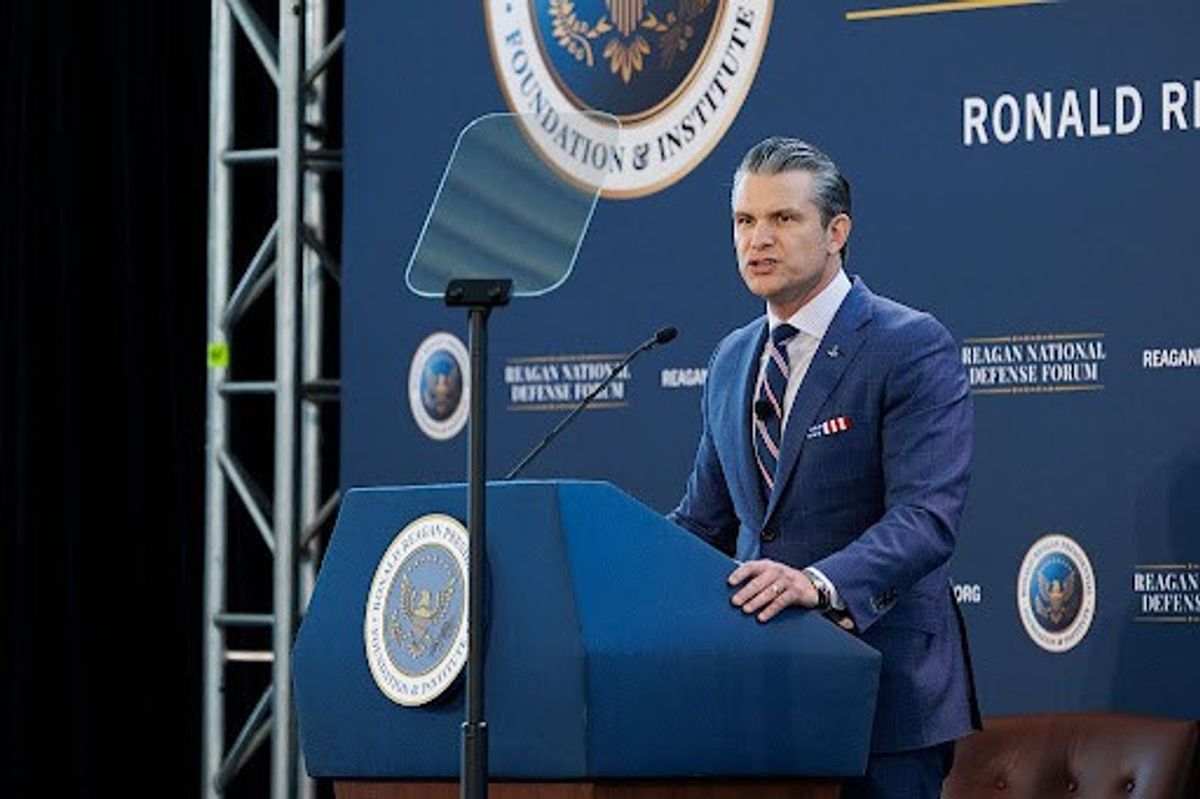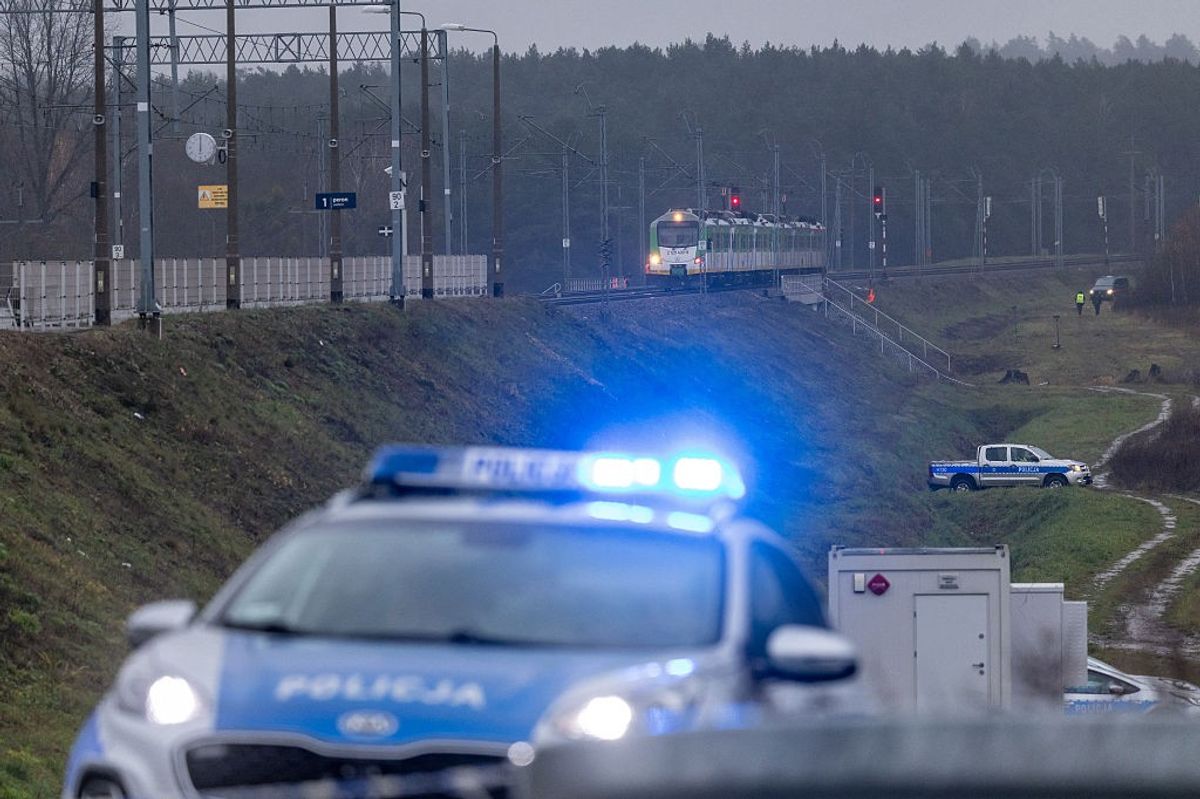That was Russian President Vladimir Putin speaking to members of his Security Council in the Kremlin on September 22, 2025, in the Kremlin.
Later that day, when White House Press Secretary Karoline Leavitt was asked about Putin’s offer, she said, “The President is aware of this offer extended by President Putin, and I'll let him comment on it later. I think it sounds pretty good, but he wants to make some comments on that himself, and I will let him do that.”
One day later, 22 minutes into his long, rambling speech before the U.N. General Assembly, President Trump departed from his prepared remarks and said, “We want to have a cessation of the development of nuclear weapons. We know and I know and I get to view it all the time — Sir, would you like to see — and I look at weapons that are so powerful that we just can’t ever use them. If we ever use them, the world literally might come to an end. There would be no United Nations to be talking about. There would be no nothing.”
I want to believe that was President Trump beginning to respond, extemporaneously, to Putin’s offer, and serious talks will soon begin to extend the New START limits on U.S. and Russian deployed nuclear warheads and delivery systems.
Let me suggest a reason why Putin made the offer and more reasons why Trump should go along.
In calling for the New START extension, Putin made reference to “U.S. plans to expand strategic components of its missile defense system, including preparations for the deployment of interceptors in outer space.” That was a reference to Trump’s so-called Golden Dome, space-based, missile defense plans of which Putin said, “practical implementation of such destabilizing measures could nullify our efforts to maintain the status quo in the field of strategic offensive arms.”
It reminded me of 1984, when then-President Ronald Reagan started his own space-based missile defense program, the Strategic Defense Initiative (SDI), which also drew complaints from Moscow. However, three years later, Reagan and then Soviet Union President Mikhail Gorbachev signed the 1987 Intermediate-Range Nuclear Forces Treaty, which at that time did away with a whole class of nuclear weapons.
Eventually, when SDI proved unworkable, in 1991 then-President George H.W. Bush and Gorbachev agreed to the first Strategic Arms Reduction Treaty (START).
At the time, the was a belief that Gorbachev sought negotiations that led up to START because Russia could not afford to match the costs the U.S. was putting into space-based missile defense.
Back then, I believed that was the case and today I think that Putin, faced with continued fighting in Ukraine, cannot afford a space-based missile defense competition with the U.S. -- and neither can Trump, although the latter does not know it yet.
The Ukraine war costs are dominating Russia’s economy.
After raising personal income taxes sharply at the start of the year, Putin had pledged there would be no more big changes to the tax system until 2030. But the Russian Finance Ministry last week said it intends to raise the country’s value added tax (VAT) by two percent to 22 percent, to help meet the growing deficit. Russia’s VAT applies to the sale of goods and services within Russia, the import of goods, and the provision of electronic services by foreign companies, much like a U.S. excise tax.
The Russian budget deficit increased to 4.9 trillion rubles ($58 billion) in the January-July 2025 period, up from 1.1 trillion rubles ($13 billion) the year before. Russia has already revised its 2025 deficit projection upward from 1.7% to 2.6% of GDP. Russia’s oil and gas revenues fell 19% compared with the year earlier, in part due to lower global oil prices, but also thanks to lower world purchases, such as Moscow’s loss of most of its natural gas sales to Europe.
At home, inflation is around 8 percent as wholesale gasoline prices in Russia have surged in part because of Ukrainian drone attacks that have damaged oil refineries and shut down some major facilities. In August, the government introduced a temporary gasoline export ban and last week Deputy Prime Minister Alexander Novak said the plan is to extend that ban through the end of the year.
The Cipher Brief brings expert-level context to national and global security stories. It’s never been more important to understand what’s happening in the world. Upgrade your access to exclusive content by becoming a subscriber.
On Friday, Kremlin spokesman Dmitry Peskov said that Russia had not yet received signals from the American side via secure channels in response to President Putin’s proposal to extend New START. But, when asked about the timing of a Washington reply, Peskov said, “We’ll wait this week,” noting Trump’s busy schedule during the United Nations meetings. “Understandably, these have been difficult days for him [Trump],” Peskov added.
Trump’s most immediate problem this week is the looming shutdown of the government. But when he gets around to dealing with Putin’s offer to extend New START, he faces some new U.S. nuclear weapons cost problems that he needs to recognize, along with serious technical issues facing his Golden Dome program.
For example, on September 18, the Government Accountability Office (GAO) reported to Congress that the modernized, uranium processing facility in Oak Ridge, Tennessee that was originally to be operational in 2026 to ensure uranium for nuclear weapons and to fuel U.S. Navy ships will not be ready before 2034. Meanwhile, the original cost has ballooned from $6.5 billion in 2018 to $10.35 billion.
More concerning, the GAO said the National Nuclear Security Administration (NNSA), which runs the nuclear complex, said its contractor has said that it will cost about $463 million to safely continue uranium processing operations until 2035 for current needs in the 80-year-old Building 9212 at Oak Ridge.
At the same time, the U.S. is in the midst of modernizing its three major strategic nuclear delivery systems – B-52 long-range heavy bombers with the B-21; Ohio class strategic nuclear submarines with Columbia class submarines; and Minuteman III land-based intercontinental ballistic missiles (ICBMs) with the Sentinel system.
This ambitious program, which the Congressional Budget Office this year said may cost nearly $946 billion to operate and modernize over the next ten years, has shown some troubling problems. While the B-21 bombers seem to be on schedule, the Columbia submarines are running about one year behind schedule. Although the Navy claims the first one will go on patrol in 2030, the Navy is planning to extend the service lives of up to five Ohio-class SSBNs to hedge against potential delays in the deliveries of Columbia-class boats.
Problems with the Sentinel ICBM system are much more serious.
Need a daily dose of reality on national and global security issues? Subscriber to The Cipher Brief’s Nightcap newsletter, delivering expert insights on today’s events – right to your inbox. Sign up for free today.
The Defense Department (DoD) earlier this month estimated the Sentinel program, which involves replacing 450 Minuteman IIIs, currently based in silos in three different states, will cost more than $140 billion and be delayed by years.
Because of the Sentinel delay, the Air Force “must continue to operate and maintain the aging Minuteman III system over the next decade and beyond to meet strategic deterrent requirements until Sentinel is fully fielded,” according to a September 10, GAO report. Air Force Global Strike officials told the GAO that “operating two weapon systems simultaneously while executing a massive military movement to convert the old system to the new system,” would be “a very complex operation.”
Another issue: “As part of Sentinel restructuring, the Air Force is reassessing all aspects of its plan to field Sentinel, including the extent to which Sentinel will use the existing Minuteman III launch facilities. The Air Force has yet to finalize the design for Sentinel launch facilities,” the GAO said.
I have to add to the current strategic nuclear issues facing the Trump administration, serious doubts remain as to whether the President’s space-based Golden Dome missile defense will ever reach fruition.
I have in past columns quoted Todd Harrison, Senior Fellow at the American Enterprise Institute, as explaining the complications with the idea of space-based interceptors killing enemy ICBMs during their boost phase, which is a key element of Golden Dome. As Harrison has explained it, you have only two-to-three minutes to target and shoot during the enemy ICBM’s boost phase, and then because your orbiting interceptors need to be in range, there’s a requirement that at least 500 interceptors would be needed for each target.
During a September 16, interview at the Council on Foreign Relations, Harrison added a Golden Dome price when he said, “If you want to do boost-phase intercept from space, we're talking something if you really want to do the scale of protection they're talking about for a Russian or a Chinese or a Russian Chinese simultaneous launch, Worst case, you are talking something that's going to go into the trillions of dollars over the next twenty years or so.”
I lay out these details to show that Trump, as well as Putin, has a financial incentive to do the right thing and together renew the New START agreement.
The Cipher Brief is committed to publishing a range of perspectives on national security issues submitted by deeply experienced national security professionals.
Opinions expressed are those of the author and do not represent the views or opinions of The Cipher Brief.
Have a perspective to share based on your experience in the national security field? Send it to Editor@thecipherbrief.com for publication consideration.
Read more expert-driven national security insights, perspective and analysis in The Cipher Brief















